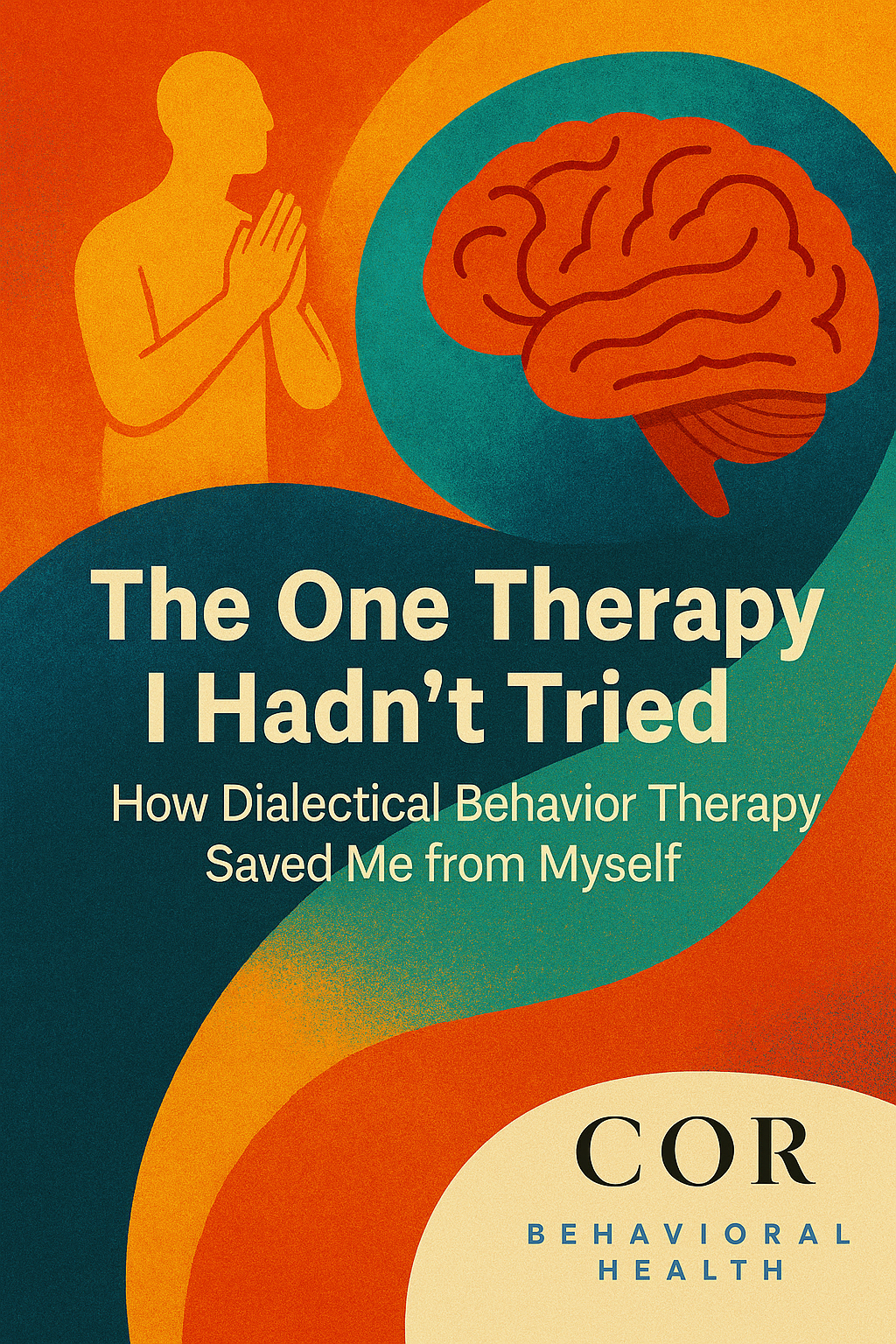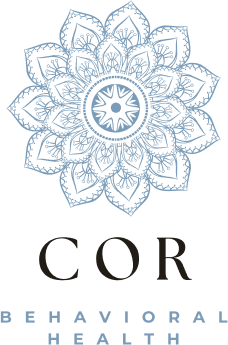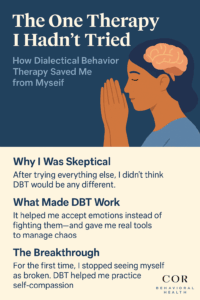
I didn’t believe in “new approaches.” Not really. I believed in burnout. In doing the work, and still waking up anxious. I believed in trying and trying and watching nothing change.
Then I found dialetical behavior therapy in Hobe Sound, Florida, and I finally stopped spiraling—because I learned how to interrupt the spin.
I Was the Clinician Who Didn’t Think It Would Work
I had been to individual therapy. More than once. I’d sat in trainings. I’d read the research. But nothing I had tried—personally or professionally—gave me the kind of relief I needed when I was emotionally drowning.
DBT wasn’t just another acronym. It was the first time I learned how to pause before I panicked.
Why I Almost Didn’t Say Yes
Skepticism feels safe when hope feels dangerous.
I told myself I’d try DBT to “see what clients experience.” Truth was, I needed a reason to believe that emotion regulation was possible. That someone like me—smart, spiraling, high-functioning—could still change.
What Made DBT Different
DBT gave me tools I could use mid-meltdown—not just “insights” after the fact. There was something revolutionary about learning skills like distress tolerance and radical acceptance.
It wasn’t about overhauling my personality. It was about building a toolkit to survive my worst emotional moments. It was teaching me to work with my anixety and depression, rather than running from it or worse–using other substaces to “make it go away.”
I Learned How to Stop Making Things Worse
That sounds obvious. It’s not.
Until DBT, I didn’t realize how often I made pain heavier. By ruminating. By reacting. By pushing people away. DBT gave me language for the chaos and a ladder out of it. Not every time—but more and more often.
When Skills Become Lifelines—Not Just Lessons
One of the turning points for me was realizing DBT wasn’t meant to stay in the therapy room. I could use these skills in traffic. In fights. During panic. Reliving trauma. I could use them before things blew up—or right in the middle of the storm.
At COR Behavioral Health, the team didn’t just explain the skills. They modeled them. They helped me apply DBT techniques across multiple touchpoints—including when I considered stepping into intensive outpatient treatment to get more support.
The skills stuck because they were never treated like homework. They were treated like survival gear. And that changed everything.
Validation Wasn’t a Buzzword—It Was a Lifeline
One of the most powerful moments in DBT for me?
Hearing, “Of course you feel that way.” No fixing. No minimizing. Just the space to feel something fully without being swallowed by it. That kind of validation opened me up in a way traditional or group therapy hadn’t.
I Started Practicing What I Preached
As a clinician, I had told clients to “breathe through the discomfort.” But I hadn’t known how to do that myself.
DBT gave me concrete steps. When I felt like I couldn’t breathe, I had a skill. When I wanted to lash out, I had a pause. That pause became power.
DBT Isn’t Magic—But It Is a Map
Here’s the truth: DBT didn’t fix me. It didn’t erase my triggers. But it gave me a path I could walk without constantly falling off.
It helped me build a life that felt tolerable—then meaningful—when I didn’t think that was possible anymore.
Still Skeptical? That’s Okay
I get it. I’ve been there. DBT isn’t for everyone, and not every therapy works for every person. But if you’ve tried everything and still feel like you’re drowning, it might be worth trying the one therapy you haven’t.
You don’t have to believe in it fully to take the first step.
Ready to explore a different kind of support? Call (888) 231-7973 or visit our dialetical behavior therapy services in Hobe Sound, Florida to learn more.





